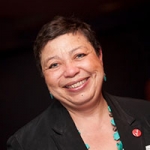
Stan Rosenberg
Out of Many, One: Cultural Equity as the Foundation for a More Perfect Union
Posted by Aug 12, 2016

Stan Rosenberg
Arts organizations play a crucial role in working toward cultural equity by supporting artists and engaging people in arts-related activities. This is nothing less than a part of the foundation we need to become a more perfect union. Together, artists and arts organizations bring the transformative power of the arts to the people and help lay the groundwork for change.
Read More



















 Nina Ozlu Tunceli
Nina Ozlu Tunceli

 Heather Ikemire
Heather Ikemire

 Terry Liu
Terry Liu
 Laura Perille
Laura Perille

 Mari Barrera
Mari Barrera
 Jeff Poulin
Jeff Poulin






